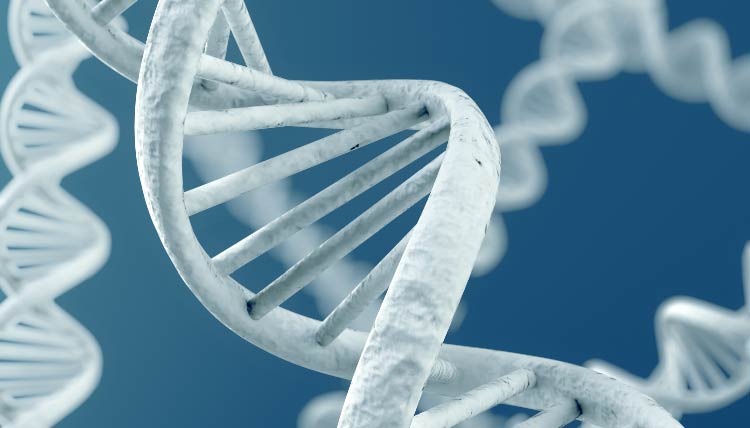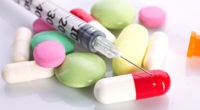Biosimilars: Hitting or Missing the Mark?
Biosimilars are a small part of the overall market for biologics, which accounted for $277 billion in sales globally in 2017 and is projected to reach $452 billion by 2022. The European Union leads with biosimilar approvals comparative to the US, so what has been the impact of biosimilar competition? DCAT Value Chain Insights takes an inside look.
Inside the biosimilars market
This fall (September 2018), the European Commission and the European Medicines Agency (EMA) held its fourth multi-stakeholder conference in Brussels to promote the exchange of knowledge and best practices in biosimilars’ use and uptake. Participants included representatives of public authorities, patients’ organizations, healthcare professionals, and pharmaceutical companies. Among the issues examined at the conference was the impact of biosimilar competition in Europe.
Biosimilars are a small but growing part of the market for biologics, which overall accounted for $277 billion in sales globally in 2017 and is projected to reach $452 billion by 2022, according to a recent report, Advancing Biosimilar Sustainability in Europe, by the IQVIA Institute for Human Data Science. In 10 developed markets, $45 billion of biotech spending is now estimated to be exposed to biosimilar competition, and another $52 billion is expected to go off patent from 2019 to 2022. By 2027, 77% of current biotech spending is expected to be subject to some form of competition, according to the report. Approximately 184 manufacturers globally are investing in the development and commercialization of biosimilars, according to the study.
In Europe, more than 45 biosimilar products for 15 biologic-based referenced medicines have been approved and registered (as of August 2018)—treating a variety of diseases within oncology, autoimmune disorders, diabetes and fertility, according to information from the EMA and as reported in the IQVIA analysis. But a key question for the market and policy makers is: what has been the impact of biosimilar competition in Europe?
That question was addressed in part by another IQVIA report, The Impact of Biosimilar Competition in Europe, prepared for the European Commission and presented at the Commission’s conference in September. The report describes the effects on price, volume, and market share following the arrival and presence of biosimilar competition in Europe. It examined seven classes of biologics/biosimilars: epoetin (EPO); granulocyte-colony stimulating factor (G-CSF); human growth hormone; anti-tumor necrosis (anti-TNF) factor; gonadotropin preparations for infertility; insulins; monoclonal antibody antineoplastic agents, such as rituximab; and low-molecular-weight heparin.
The report offered several key observations as outlined below.
- The entrance of biosimilars increases price competition.
- Biosimilars have the potential to improve patient access of the total market.
- In some countries, biosimilars have completely taken over the (biosimilar and referenced product) market.
- In some therapeutic classes, lowering the price of the referenced product can limit the market penetration of the biosimilar.
- The speed of uptake has increased for some of the more recent biosimilar launches.
- Not all biosimilar classes have achieved high uptake.
- Originators can protect market share by developing new formulations.
Price competition
Biosimilars in the seven established therapy areas as previously identified that had competition showed reduced average list prices in European countries, according to the IQVIA report. The increased competition resulting from biosimilars entering the market affected not just the price of the respective biosimilars’ referenced products, but also the price of the whole product class. Depending on the product and country, biosimilar competition can have almost as large an impact on the total market price as it has on the biosimilar/referenced product price, according to the report. For example, in the case of EPO’s in Portugal, the price decrease of the total market was -66%. The report also points out that list-price reductions vary considerably across Europe within a class and between classes with differential in pricing largely dependent on the length of time biosimilars have been on the market.
The report noted, however, that the correlation between biosimilar volume market share of the total market and price reduction (at list- price level) of the total market is weak, meaning that savings can be achieved even if the biosimilar market share is low. “Price reduction can be achieved through price regulation interventions and/or commercial decisions of manufacturers,” notes the report. “Even if the biosimilar product does not end up being the product sold, it is likely an essential step to generate a more competitive environment, which leads to lower prices.” The report points out, however, in the long term, low biosimilar uptake could lead to fewer new biosimilars being developed, thereby reducing the overall competitive pressure. The report also points out that additional savings in the market can be realized through discounts not only for the biosimilar products but for the originator or next-generation originator products.
Biosimilars and market access
For the most part, biosimilar competition increases market access. The report describes a significant increase in consumption following biosimilar entry in countries that had low starting volumes of that particular product. Although lower prices can impact usage, there are other factors to consider with regard to consumption patterns, notes the report: (1) new indications or restriction of indications; (2) general economic conditions imposing use restrictions; and (3) changes in diagnosis and prevalence of diseases. The report says that a price-only policy alone does not generate market access; country policies that stimulate biosimilar penetration are required to increase patient access. The report further asserts that with biosimilar competition, there can be demand elasticity in the market. For example, since the launch of infliximab biosimilars in Europe in September 2013, there has gradually been an increase in the total number of infliximab treatment days, which have increased at a faster rate than before biosimilar entry. In 2017, biosimilar products accounted for over half of the infliximab treatment days.
Biosimilars’ market share
The report points out that in some countries, biosimilars have completely taken over both the biosimilar and referenced product market. The report notes that in classes where biosimilars have been on the European market for several years, there are now many examples of countries where the referenced product is no longer available and biosimilars have 100% market share of treatment days (vs biosimilars and referenced products). This situation often exists in European countries with low gross domestic product/capita, where the incentive to switch to biosimilars may be high.
Reference product pricing and biosimilar uptake
For some of the therapeutic classes, lowering the price of the referenced product can limit the market penetration of the biosimilar, noted the IQVIA report. The larger the originator’s price cut on the referenced product, the less the impact of biosimilars in that market, thereby illustrating that originator competitive pricing strategies can influence the uptake of biosimilars in some areas, according to the report. Reducing originator prices (either because of regulations applied in a country or competitive originator pricing strategies), could result in biosimilars not entering the market at all, thereby restricting competition in the market, according to the IQVIA analysis.
Speed of biosimilar uptake
Another observation in the European market is that the speed of uptake has increased for some of the more recent biosimilar launches, including those where there are multiple biosimilars in the same class, according to the IQVIA report. For example, in the anti-TNF class, the uptake of etanercept biosimilars (which had only one biosimilar approved in the first year) has been faster than infliximab biosimilars (which had two biosimilars approved in the first year) across Europe.
Therapeutic classes and biosimilar uptake
The IQVIA report points out that there is a wide variation in the uptake of biosimilars across classes in Europe and that time on the market does not always determine success. For example, EPO biosimilars were launched before GCSF biosimilars but have a significantly lower change in volume treatment days since market entry. In some classes, such as insulin and the gonadotropin preparations for infertility, biosimilars have had a lower impact on price and volume in Europe. “In these markets, prior to biosimilar entrance there was already a highly competitive market situation for established products,” explains the report. “This provides less of an incentive for prescribers to switch to biosimilars, which can result in low biosimilar uptake.”
There are also market-specific characteristics that can influence uptake. For example, the report points out there are different barriers to launching retail biosimilars (such as those prescribed by primary-care doctors and purchased at the retail level) and hospital biosimilars, such as the substantial company investment required to promote to a large population of primary-care physicians and few incentives offered with retail biosimilars compared to hospital biosimilars.
New formulations as a generic-defense strategy
Another finding from the IQVIA report is that new formulations can be used as a biosimilar defense strategy by originators. For example, in the case of Mabthera, part of Roche’s biosimilar defense strategy was to start switching patients from the intravenous (IV) version of Mabthera (rituximab), to the subcutaneous (SC) version prior to the biosimilar launch, which was available in IV only. The report points out that in 2017, biosimilars started eroding the European Mabthera IV market while the Mabthera SC treatment-day volume continues to grow.
Another example of using new formulations as a generic defense strategy is with filgrastim. Amgen’s Neulasta (pegfilgrastim) and Teva’s Lonquex (lipegfilgrastim) are longer acting forms of filgrastim (single dose per treatment cycle vs once daily for a maximum of 14 days per treatment cycle). The report points out that they have been able to maintain treatment-day market share after the introduction of the filgrastim biosimilars in 2008 while the referenced products and other non-accessible market products share have declined.






